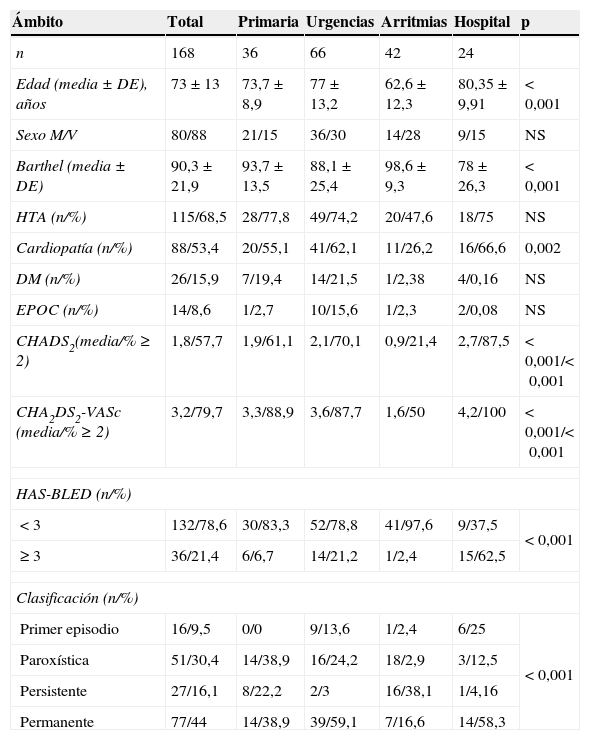Evaluar la adecuación del tratamiento de la fibrilación auricular (FA) 6 años después de la instauración de una Unidad coordinada de FA.
Pacientes y métodosPacientes con FA atendidos durante 14 días consecutivos en los servicios de Urgencias, Medicina Interna, Neurología y Arritmias de un hospital de tercer nivel y en 3 centros de atención primaria de un área sanitaria. Se evaluó: tratamiento y adecuación a las guías clínicas vigentes, pruebas realizadas y conocimiento de la arritmia. Se compararon los resultados con los de una población de 239 pacientes atendidos 6 años antes.
ResultadosSe incluyeron 168 pacientes. Mejoró el conocimiento de la arritmia. La adecuación del tratamiento (control de frecuencia, control de ritmo y profilaxis antitrombótica) se mantuvo. La adecuación de la profilaxis antitrombótica se asoció negativamente con la edad avanzada (p<0,001) y positivamente con el conocimiento de la arritmia (p=0,026).
ConclusiónEl tratamiento de la FA en un área sanitaria coordinada se mantiene adecuado 6 años después de la instauración de una Unidad coordinada de FA. Los pacientes de edad avanzada todavía son poco anticoagulados. La educación sanitaria puede mejorar este déficit.
To evaluate the adequacy of atrial fibrillation (AF) management 6 years after the establishment of a coordinated AF Unit.
Patients and methodsPatients with AF attended during 14 consecutive days in the Emergency Room, Internal Medicine, Neurology and Arrhythmia departments of a tertiary hospital, and 3 primary health care centers of the same urban health care area were included. Treatment for AF and its adequacy to current clinical guidelines, tests performed and knowledge about the arrhythmia were evaluated. Results were compared with a population of 239 patients treated 6 years earlier.
ResultsOne hundred and sixty-eight patients were included. Knowledge of the arrhythmia improved. The adequacy of treatment (rate control, rhythm control and antithrombotic prophylaxis) remained at the same level as in the previous period in all areas. The adequacy of thromboprophylaxis was negatively associated with advanced age (P<.001) and positively associated with knowledge of arrhythmia (P=.026).
ConclusionTreatment of AF in a coordinated health area remains appropriate 6 years after the establishment of a coordinated AF unit. Elderly patients are still poorly anticoagulated. Health education may improve this deficit.
Artículo
Comprando el artículo el PDF del mismo podrá ser descargado
Precio 19,34 €
Comprar ahora








